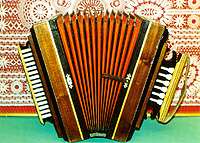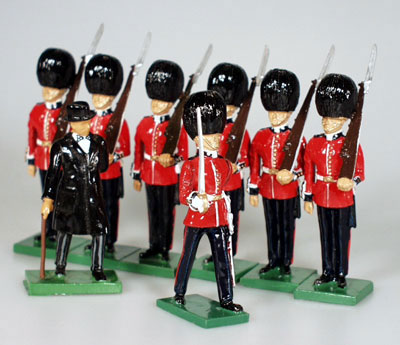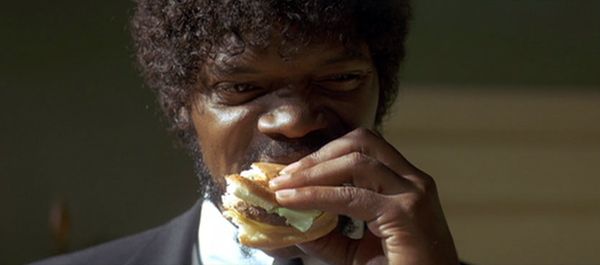
It's a human being out of his element. A hangover the day after consuming
handsa homemade vodka. An awkward dialogue in a shop with a clerk who speaks Seto, a tongue that could either be a dialect of Estonian or a language in its own right -- the jury's still out, and the arguments yea and nay are inherently political.
I am an adaptive type, but when in Setomaa, I sometimes feel like I am being pushed and pulled, squeezed back and forth like a local musician's
karmoška. I don't know what I am doing, I don't know where I am going, and I have absolutely no idea what they are saying. Setomaa. It's a completely foreign place to me, and I say that as an American who lives in Estonia.
Where is Setomaa? Setomaa is a
sliver of land that straddles the Estonian-Russian border. The shape of the land is one of thick forests, sea-like fields, and rolling hills. Setomaa is different. It feels wild, untamed, while much of Estonia has a bit of a royal hunting grounds aesthetic, with its orderly fields and state forests. The official point of demarcation between Lutheran Eestimaa and Orthodox Setomaa is the Piusa river, which, coincidentally, runs about a kilometer northwest from our country house. Offically, we are on the Seto side but the border here and between Estonia and Russia in general is like most borders, porous, impossible to truly delineate, populated by bilinguids and free thinkers, people who are used to saluting contrasting regimes.
I would add that Setomaa is the forgotten backyard of both Estonia and Russia. Politicians go there to scare up extra votes and maybe indulge themselves in its cultural idiosyncrasies, but the region is of little real geopolitical significance; there is no oil shale, no ice-free harbor, no gold. While Estonia is led by Tallinn, which is shy of 300 kilometers northwest from Setomaa, Russia is led by Moscow, which is about a thousand kilometers away. Setomaa itself is, forgive me, devoid of significant human development. There are no gas stations, for instance, between Värska, on Lake Pihkva/Pskov in the east, and Vastseliina, at one time a frontier outpost of the Teutonic Order on the west, nor are there major opportunities to procure material goods. Instead, you will find small "villages" of farms, and sometimes even just three families will comprise a village. And in these villages live Seto people, who are not Estonians.
To be an Estonian these days means increasingly to simply hold Estonian nationality. To be an Estonian, one must own the latest technology, consume the domestically produced products, and be attentive to the national debates as broadcast from Tallinn. The Estonian language, once a great source of ethnic pride, has become commoditized, generic. It's the language of politics, of economics, of sweepstakes and one-time offers and lotto jackpots. If archaic Seto language is homemade apple juice in a jar, then Estonian language is a multivitamin fluorescent fruit drink in a plastic bottle. If Seto is a choir of old ladies singing runo songs in Obinitsa, Estonian is a topless DJ spinning electronic beats in Pärnu. The Estonians are from the Skype-struck future. The Setos themselves are from somewhere that seems vaguely like the past. And who are these Seto people anyway?
They are goddamn party animals. I am sure they would like to put on like they are hardworking types, the real salt of the earth, but for every hammer lifted in Setomaa, several liters of
handsa vodka are consumed. For every fence mended, several loaves of local
sõir, a soft cheese spiced with caraway seeds, are digested. If there is an opportunity for Setos to throw a party, they throw one. They'll blame the poor condition of some of their homesteads on the economy or the break up of the Soviet Union, but the real reason is that most days they hang around outside singing, playing tunes on the
karmoška, drinking
handsa, and arguing about what makes a Seto a Seto, or how
võro kiil -- the southern Estonian dialect-language spoken north of the Piusa -- is different from
seto kiil.
The Setos call Estonians
tsuhknad, which is related to the old Russian word
chud, indeed, Lake Peipsi is known to Russians as
Chudskoye ozero. It's not a term of endearment, but not an insult either. Instead, it denotes a sort of polite, aloof, clunky northern person. Setos and Russians see Estonians the way Estonians see Finns. I imagine that to Setos, an Estonian is the kind of person it might take several shots of
handsa or several helpings of homemade beer to start having a good time. From the Estonian viewpoint, the Seto are wayward Estonians in Russian national costume, linguistic relatives but bohemian to a fault. There is a touch of envy there too, as if the Seto have preserved the traditions that the Estonians themselves have lost.
Of course, I am exaggerating. My impression of Setomaa are forged mainly from attending events big and small, a local wedding, an annual gathering. The latest one,
Setomaa Kuningriigi Päevad, held in Mikitamäe last week, witnessed a parade of the Seto "army," where brigades of men and women armed with shovels and hoes and other implements of destruction marched before their newly chosen
ülemsootska, King Ahto Raudoja, and vowed to politically unite Seto lands on both sides of the border. Raudoja, age 35, is a piece of work, a living legend. Known throughout his kingdom for his ironic sense of humor and his Cossack dancing ability, he is now the face of Setodom.
Some might look at Estonians and Setos and judge them to be basically the same, and they are. In fact, Setos are Estonians, in that they hold Estonian nationality, play the lotto, sunbathe in Pärnu, do everything else the Estonians do. But still, I have attended song festivals in Tallinn. I have attended weddings and funerals in Estonia proper. I am familiar with Estonian culture. And so maybe I have some ability to compare Setomaa and Eestimaa and to say it's a little different. Seto society is conservative, old fashioned, but still not wholly exclusive. One can, given time and dedication, join this lump of humanity. Such people are called
isetehtud setod -- self-made Setos.
What do you need to be a self-made Seto? Well, you need your own
talo, or farmstead. You also need to befriend a Seto in the know who will guide you along the way. He (or she) will instruct you as to where to put your religious icon, how to cut your pork with a spoon (as Setos don't use forks), and how to make
sõir a magic ingredient in most of your cuisine. Your Seto guide will introduce you to people in the 'hood so that they know you are kosher. You may not be a real Seto, but at least you know a real one. To fit in, you'll also need a Seto flag, Seto national costume, and your own Russian accordion, the
karmoška, to play during festivities, which always seem to be happening.
I haven't bought into the whole package yet, but I did succumb to making
Zetod my favorite band. These guys, four kids from Värska, have mixed traditional song with blue ska beats and rock'n'roll guitar hooks. When they get going, they can really shake a concert hall. There is a bit of pagan thunder to their sound, so I would compare them to Led Zeppelin, the English rockers who mixed Celtic lore with Delta blues. A Seto friend disagrees. He thinks Zetod are the Creedence Clearwater Revival of Estonia, bringing back that oldtimey born on the bayou funk that is lacking from the Estonian Top 40. Either way, I am a fan. Their new disc is called
Lätsi Sanna -- in Estonian, I believe it's
Läksid Sauna, in English it should be "Went to the Sauna." It's perfect music for when you are lost, driving through some unpaved country road at night, low on gas, trying to get back to your
talo.
It's fitting that I found my way into Seto identity via the music, because I actually know something about music. I don't know much about anything else. A number of alien-looking spiders have esconced around our
talo, and I had to ask my Seto guide Mart if they were poisonous. You could call me paranoid or just cautious, but I sincerely don't know. I don't know about spiders and I don't know about well water and I don't know about electrical wiring. I am, you could say, a Seto know-nothing.
I wonder, though, about the locals' gung-ho approach to life. On the road, I mostly drive the speed limit, tend to avoid spoiled foods, and prefer metal, factory made ladders to the wooden, homemade ladders that are common in Eestimaa and Setomaa. One could call such cautiousness cowardice. Others might call it common sense. I bring to your attention the fact that the average Estonian male's life expectancy (68.7) is among the lowest in the European Union, and is 11 years behind the average Estonian female's life expectancy (79.5). Why is that? It's not because of smoking and drinking and eating too much sour cream: it's because Estonian, and presumably Seto, guys get killed in accidents, doing really stupid things.
Here, I pause to spit three times over my shoulder and knock on wood. Setomaa has claimed me as a music fan and property owner and kindred spirit. I do not wish for it to claim me as anything else.
 Blogger Flasher T of Antyx has an excellent rundown of the latest scandal to hit Edgar Savisaar, mayor of Tallinn and leader of the Centre Party (Keskerakond), the second largest party in the Estonian parliament.
Blogger Flasher T of Antyx has an excellent rundown of the latest scandal to hit Edgar Savisaar, mayor of Tallinn and leader of the Centre Party (Keskerakond), the second largest party in the Estonian parliament.

















